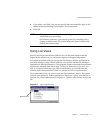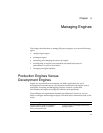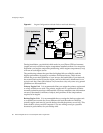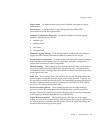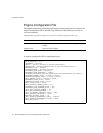Configuring an Engine
Chapter 4 Managing Engines 85
Configuring an Engine
An iIS process system can have any number of engines. For example, one engine
might be used for testing and another used for production. In other cases,
organizational considerations or heavy load conditions might require a number of
production engines. While engines can communicate with one another—a process
executing on one engine can be invoked from a process executing on
another—each engine operates independently. One engine, for example, cannot fail
over to another engine.
Each engine is composed of a number of engine components—engine units,
governor, and database services (see Chapter 1, “Introduction: iIS Process
Management”). For each engine to function independently, its components must
each be identified with the engine and have a unique name, provided at startup
time.
Each engine requires two levels of configuration:
• engine component partitioning
Specify which computer nodes in your environment will host the different
engine components—engine units, governor, and database services.
• engine startup properties
Specify a number of startup properties required by the various engine
components.
The two levels of configuration are considered separately, below.
Engine Component Partitioning
An engine that is fully configured for failover and load balancing includes all the
engine components shown in Figure 4-1, described on page 35.



